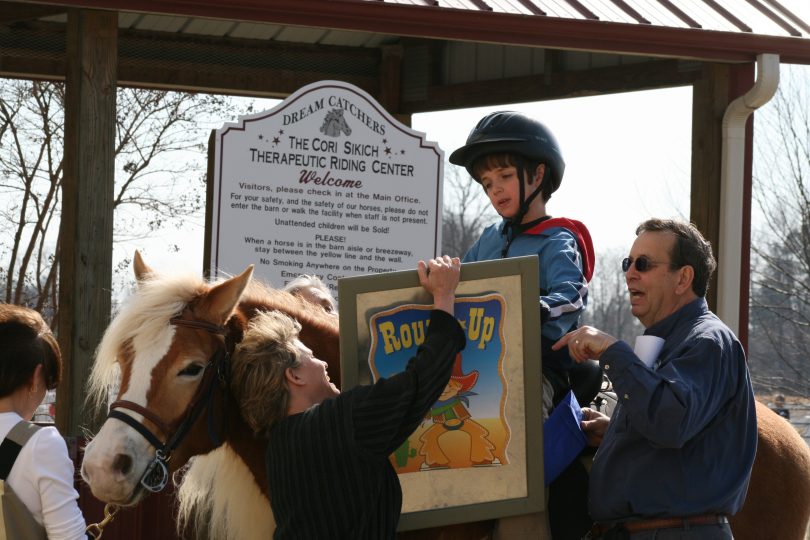One of the largest studies of its kind, led by local researchers, has found that therapeutic horseback riding significantly improves social communication and sensory processing for autistic children in the classroom. The research, published in the Journal of Autism and Developmental Disorders, is the first to quantitatively show how benefits from therapeutic riding generalize to the school classroom.
Dr. Sandy Ward, a professor in the school psychology program at the College of William and Mary with a Ph.D in school psychology, helped conduct the research project. She initially became involved with Dream Catchers, a therapeutic riding center in Toana, Va., as a volunteer and then went on to join the research team that facilitated the study.
“We also wanted to determine how much therapeutic riding was needed to achieve the benefits in social interaction and whether these benefits were maintained after students stopped riding,” Ward explains.
The study featured an interrupted treatment design in which the 21 school-aged participants rode at Dream Catchers once a week for ten weeks, followed by a six-week break before resuming with another eight weeks of riding. Researchers gave the students’ teachers two rating scales to complete the Gilliam Autism Rating Scale 2 and the Sensory Profile School Companion. Teachers assessed the students before riding began, at intermittent points during the therapeutic riding session, and after the riding session ended.
The results were astounding.
Researchers determined significant improvements in social interaction after six weeks of riding during the first round of evaluation and this benefit was maintained throughout the session. However, testing following the six-week break showed that students’ ratings went right back to baseline. When resuming riding for the second round of testing, benefits were recouped after just three weeks of riding.
Ultimately, researchers concluded that when students stopped riding for a period of time their progress in social interaction regressed, but benefits were regained quickly when lessons resumed.
“We knew in our hearts that therapeutic riding was effective because we could see these students’ behavior change dramatically at the barn,” Ward says. “But when we actually measured social behavior back in the classroom, we were sort of stunned by the results. We can say this activity not only improves a child’s performance at the barn, but it generalizes to the classroom.”
These improvements included improved social engagement and greater ability to interact with peers. Students were also reported as being calmer, more trusting, less distractible, and more receptive to learning.
Kim Wendell, one of the contributing authors of the study, is a school group coordinator and PATH certified instructor at Dream Catchers. She explains that lessons usually comprised of six to eight students in order to encourage positive social interaction. A typical lesson begins the minute students step off the bus and meet their personal “sidewalker”—their assistant and the person that speaks with them throughout a session. They proceed to the barn where they begin with a warm-up activity and then move on to riding skills.
“From the very beginning, the students learn the whole process of taking care of and riding the horse,” Wendell says. “Some of the students may never speak but they can identify grooming tools. We’ve had students say their first words on the back of a horse.”
Christine Burns, the mother of 11-year-old Patrick who attends Dream Catchers, can attest to the benefits equine assisted activities offer. Patrick, who is autistic and nonverbal, began riding during his kindergarten year.
“His core strength is better, his ease with himself is better, and his mood is better before and after riding,” Burns says. “It has also been nice for him to have an activity that he can do that doesn’t separate him from other kids his age. It’s very much an equalizer for him because when he’s riding he’s just like everyone else.”

